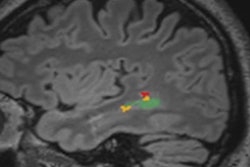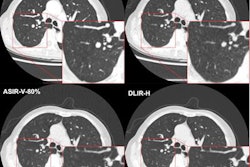
Spine MRI exams reconstructed by a deep learning algorithm are comparable to images taken with conventional MRI -- and using deep learning cuts exam time by up to 50%, according to a presentation delivered Wednesday morning at the RSNA meeting.
The findings address some of the downsides of MRI, which can include lengthy acquisition times, low throughput, high cost, patient discomfort, and motion artifacts, presenter Dr. Sanders Chang of the Icahn School of Medicine at Mount Sinai in New York City noted. There are a number of ways to decrease the time it takes to take the exam -- for example, by changing acquisition parameters, undersampling k-space, or decreasing the phase-encoding matrix -- but it's then necessary to reconstruct them for better image quality. That's why deep learning shows such promise.
"The quality of accelerated images can be restored by artificial intelligence-based deep learning image reconstruction algorithms," Chang told session attendees.
For the study, the investigators used a convolutional neural network software called SubtleMR from Subtle Medical. The software has been trained using both low- and high-resolution images from MRI datasets from multiple vendors, scanners, imaging constraints, and indications. The group included 43 patients who underwent noncontrast cervical, thoracic, or lumbar accelerated MRI exams between June and October 2020; these exams were paired with 55 conventionally acquired MRI exams for a total of 98 image sets. Two radiologists read all the exams and rated them for overall diagnostic quality, legibility (that is, whether all or most anatomic landmarks were recognizable), and the presence of artifacts.
The accelerated protocol using deep learning resulted in a 40% to 50% reduction in scan time, Chang said. And the deep learning-enhanced MRI exams were comparable to the conventional ones: There was no significant difference in diagnostic quality between the conventional images and those processed with deep learning and agreement between the two readers 0.85. More than 98% of the deep learning-processed exams showed clarity of osseous and extraosseous structures. The percentage of artifacts identified by the two readers were also comparable, at 30.1% of the conventional spine MRI images and 36.1% of the images processed with the deep-learning algorithm.
The study findings could translate to better patient experience when it comes to MRI exams, since the accelerated MRI exam protocol with deep learning image reconstruction produced comparable images compared with conventional MRI exams at a dramatically reduced acquisition time, Chang concluded.




















